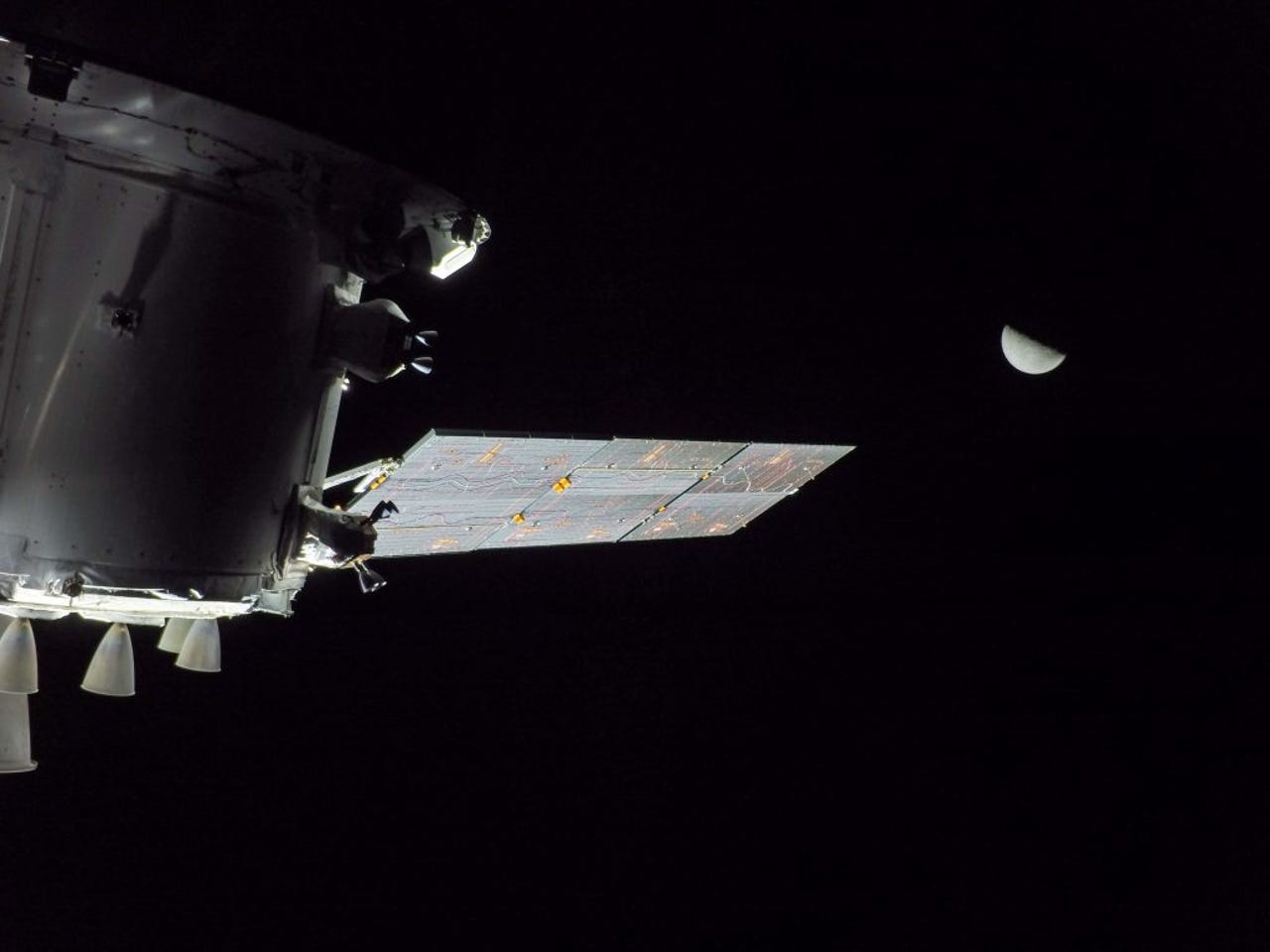Artemis 1 mission: NASA's Orion spaceship gets ready for the journey home


Orion travels in distant retrograde orbit around the Moon.
The Artemis I spacecraft Orion is getting ready to head back to Earth.
On day 15 of the Artemis I mission, the management team at NASA have voted "go" for the decision to take Orion off its distant retrograde orbit, where it has been for six days since Friday, November 25. The team will initiate a burn at 3:53 pm today to set it on the path back to Earth after this week reaching 268,563 miles from Earth, exceeding Apollo 13's record by 20,000 miles.
The whole point of the Artemis I uncrewed test run, which cost about $4 billion, is to inform the Artemis II and future missions from 2025 and onwards.
Space
"We are continuing to collect flight test data and buy down risk for crewed flight," said Mike Sarafin, Artemis mission manager. "We continue to learn how the system is performing, where our margins are, and how to operate and work with the vehicle as an integrated team."
Also: What is Artemis? Everything you need to know about NASA's new moon mission
Orion on Wednesday completed a maintenance burn to keep its current trajectory and decrease its velocity before it exited the distant retrograde orbit. This was an extra-long 95-second burn from six of its auxiliary thrusters from ESA's service module. Past thruster burns haven't exceeded 17 seconds.
According to NASA, the longer burn gave it more data to characterize the thrusters and the radiative heating on the spacecraft's solar array wings to help inform Orion's operational constraints.
Since NASA's Artemis I Space Launch System rocket launched last month, the US space agency hasn't said much about the European Space Agency's (ESA) role in the Artemis I mission, but it is now emphasizing the importance of the Orion's ESA- and Airbus-made service module's role in adjusting the spacecraft's course. Notably, French president Emmanuel Macron on Wednesday visited NASA headquarters with US Vice President Kamala Harris to view images and video from Orion and NASA's Webb telescope and discuss commercial aspects of future space ventures.
The ESA's service module is equipped with 33 engines and serves as Orion's "powerhouse". Beyond propulsion, it provides electricity, thermal control, air and water – all vital for Artemis II and future missions with human crews. Also, Artemis I is the first time NASA has used a European-built system as a critical component of a US spacecraft.
"Provided by ESA (European Space Agency) and its partner Airbus Defence and Space, the service module extends NASA's international cooperation from the International Space Station into deep space exploration," NASA noted.
Also: After the Moon flyby, what's next for NASA's Artemis I Orion spacecraft?
As of Wednesday, Orion has used 5,681 pounds of propellant, slightly up from the 5,640 it had burned since Monday. It still has 2,004 pounds of margin, which is about 94 pounds more than what it calculated prior to launch and four more than it had on Monday.
Just after 4 pm CST on November 30, Orion was traveling 253,079 miles from Earth and 50,901 miles from the Moon, cruising at 2,052 mph.
Space fans can watch the burn that will remove Orion from distant retrograde orbit today at 3:30 pm CST on either NASA's website or the NASA app.
Orion is set for splashdown in the Pacific Ocean on Sunday, December 11. NASA's Exploration Ground Systems team and the US Navy will set sail a few days prior to recover it.